In short
- The latest update to the Global Cellular IoT Module and Chipset Market Tracker and Forecast shows that shipments of cellular IoT modules and chipsets dropped 16% year-over-year in 2023; however, the tracker projects the market to climb back almost fully to 2022 levels in 2024.
- The rise of smart and AI-enabled cellular IoT modules, which enable data processing and decision-making near or at the edge, is helping to drive this projected growth.
- AI is not the same across the board—the capabilities of AI-enabled cellular IoT modules vary between low, medium, and high based on the speed of AI inference, typically driven by the chipsets used.
Cellular IoT module market update
Global shipments of cellular IoT modules and chipsets dropped 16% year-over-year in 2023, according to the updated Global Cellular IoT Module and Chipset Market Tracker & Forecast (Q1/2024 Update). Two factors contributed to this decline:
- Inventory optimization: Initial supply shortages caused by the COVID-19 pandemic and trade tensions around the same time led to manufacturers overordering modules and chipsets in 2021 and 2022, resulting in a surplus of these on the market. To address the surplus in 2023, manufacturers prioritized using existing modules and chipsets, thus delaying new orders.
- Economic uncertainty: Inflation, rising interest rates, recession fears, and renewed US–China trade tensions have created a cautious investment climate, impacting new orders.
Fortunately, corporate executives appear to be easing their economic concerns, which could lessen the impact of the second factor as supply rebalances with demand. As this balance is achieved, cellular IoT module and chipset shipments are expected to rebound in the near term and are forecasted to grow at a 22% CAGR until 2027, with the slump of 2023 almost fully eradicated by the end of 2024.
Also likely to help rejuvenate this market is the rise of smart and AI-enabled cellular IoT modules—technologies that leverage embedded computational resources to execute advanced data analysis or even AI inference directly on IoT devices. Together, shipments of these advanced modules are forecasted to grow at a CAGR of 76% until 2027.
Smart and AI-enabled cellular IoT modules represent the latest frontiers of cellular IoT connectivity—the latest interactions of cellular IoT technology operating alongside their more basic, yet still quite capable, predecessor modules worldwide. Below, we will look at the evolution of IoT modules and chipsets and delve further into AI-enabled cellular IoT modules, including a look at their various processing capabilities and some applications for these intelligent modules.
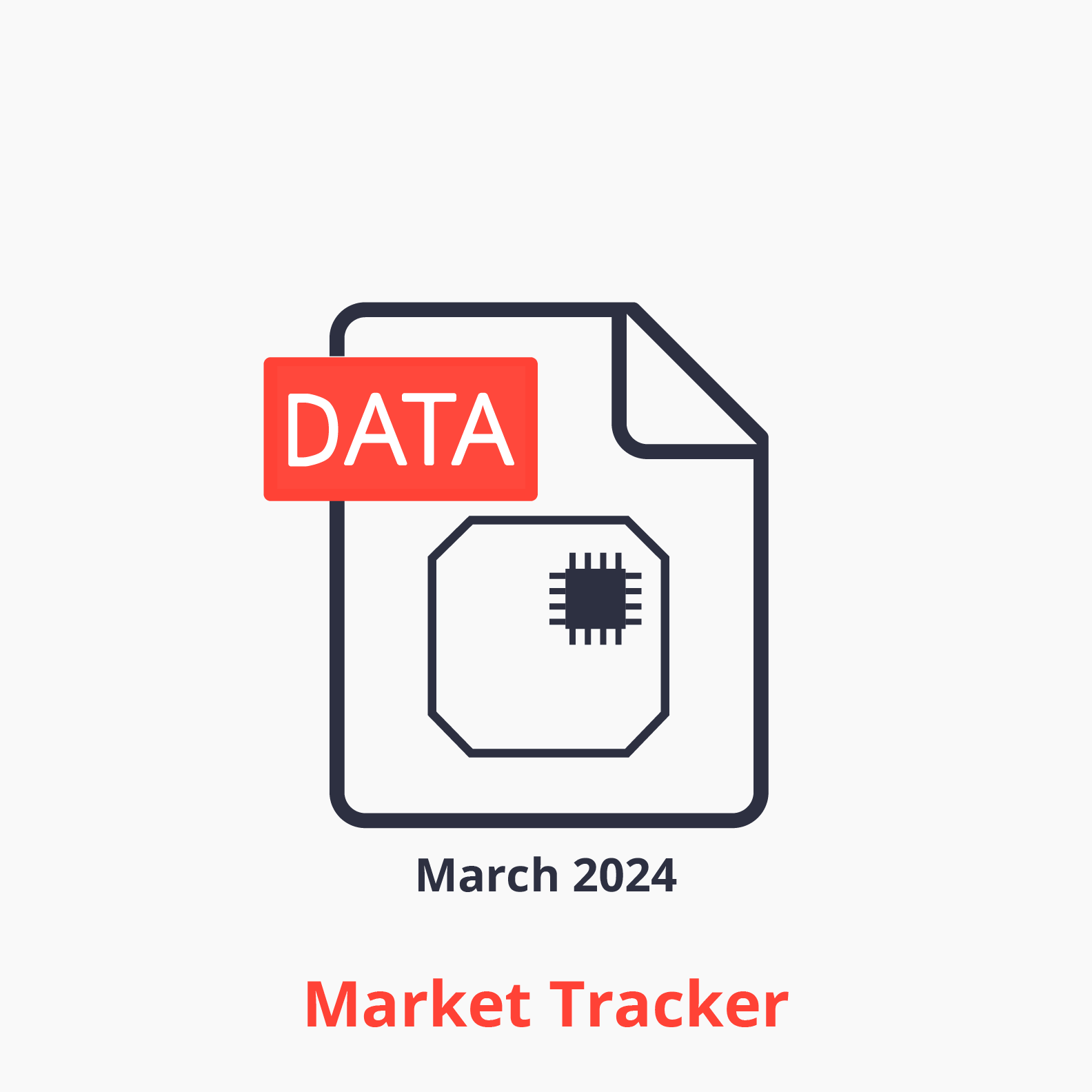
Global Cellular IoT Module and Chipset Market Tracker & Forecast
An interactive dashboard and structured market tracker that includes quarterly data on worldwide cellular IoT modules and chipsets from 2018 to Q4 2023, including a quarterly and annual forecast from Q1 2024 to 2027.
Already a subscriber?
Browse your dashboards here →
Evolution of IoT cellular modules
The evolution of IoT cellular connectivity can be seen as 3 overlapping generations: legacy, smart, and AI-enabled.
“AI-driven productivity is inevitably evolving as an essential to extend the capabilities of IoT devices, significantly [improving] operational efficiency by enriching the IoT device with edge computing.”
Eden Chen, General Manager of MC BU at Fibocom
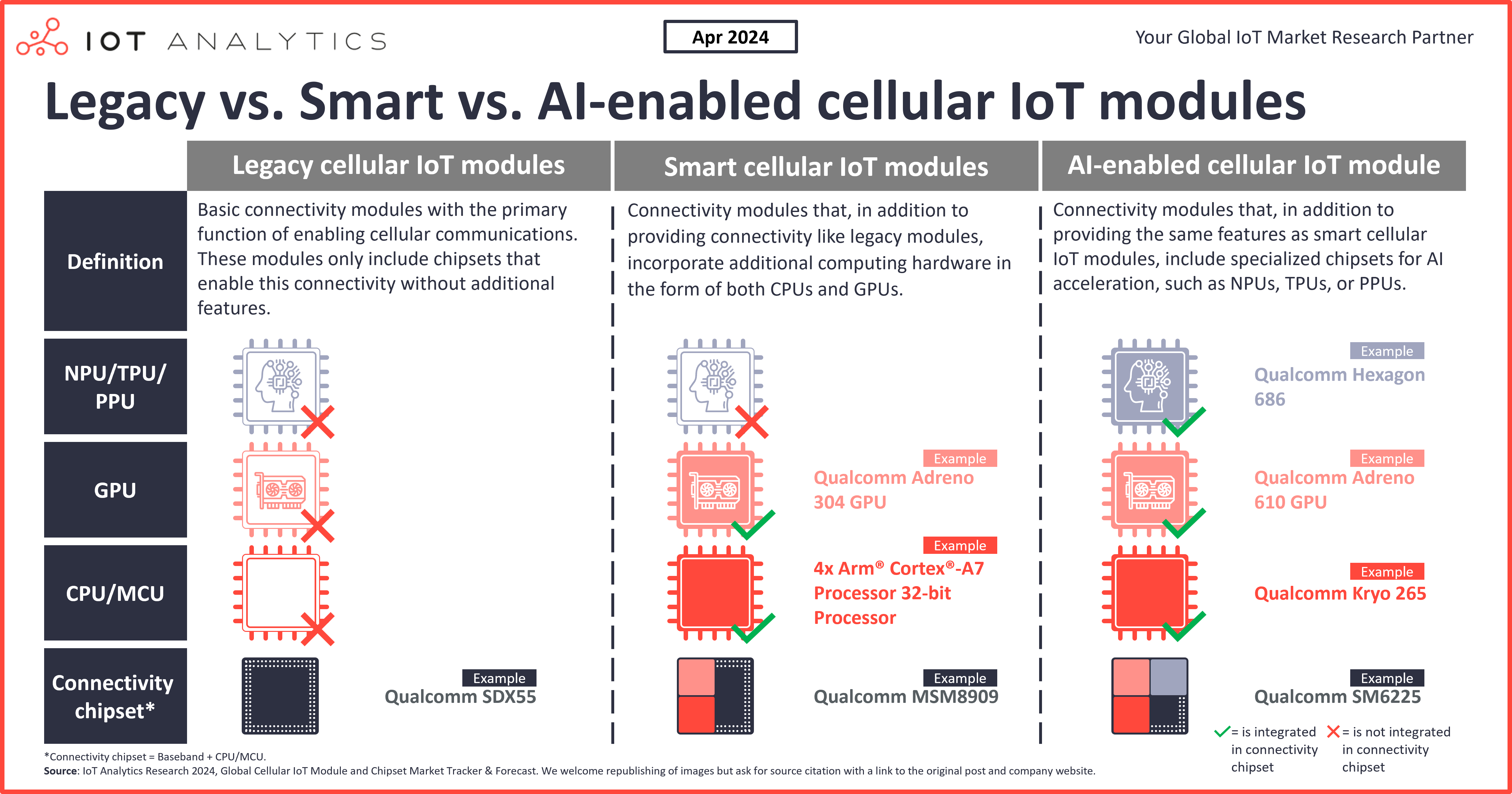
Cellular IoT module types defined
Legacy cellular IoT modules – Basic connectivity modules with the primary function of enabling cellular communications. These modules only include chipsets that enable this connectivity without additional features.
Smart cellular IoT modules – Connectivity modules that, in addition to providing connectivity like legacy modules, incorporate additional computing hardware in the form of both central and graphical processing units (CPUs and GPUs).
AI-enabled cellular IoT modules – Connectivity modules that, in addition to providing the same features as smart cellular IoT modules, include specialized chipsets for AI acceleration, such as neural, tensor, or parallel processing units (NPUs, TPUs, or PPUs).
In the beginning: Legacy cellular IoT modules
Legacy cellular IoT models have been around for nearly two decades, simply providing connectivity for IoT devices to send and receive data from other locations. They include a cellular chipset/baseband to connect to a specified cellular technology, e.g., 2G, 3G, 5G, or NB-IoT.
In 2023, legacy cellular IoT modules comprised 96% of global cellular IoT module shipments. While shipments of these modules are forecasted to grow at a CAGR of 18% until 2027, their share of global cellular IoT module shipments will begin to give way to smart and AI-enabled cellular IoT modules, as discussed below.
Example of a legacy cellular IoT module
An example of a legacy cellular IoT module is the EM9190 5G New Radio (NR) Sub-6 GHz Module from Sierra Wireless, a Canadian wireless communications equipment manufacturer. This module enables devices to connect to 5G networks with 4G and 3G fallback when 5G is unavailable. Sierra Wireless announced the EM91 series of these legacy modules in August 2020, which is fairly recent; however, this reflects that legacy cellular IoT modules are still in demand when edge processing is unnecessary.
*Note: US-based semiconductor and IoT systems provider Semtech acquired Sierra Wireless in January 2023.

A move toward the edge: Smart cellular IoT modules
Smart cellular IoT modules have been on the market for nearly a decade. In addition to providing the connectivity capability found with their legacy counterparts, these smart modules include powerful CPUs and GPUs for on-device data processing. They can also support operating systems like Linux or Android to enable advanced functions and multimedia capabilities.
In 2023, these smart modules comprised 2% of global cellular IoT module shipments; however, the tracker forecasts this number to rise to 10% by 2027, with a CAGR of 79%.
Example of a smart cellular IoT module
An example of a smart cellular IoT module is the CQS290 Smart Cellular IoT Android Module from US-based cellular IoT module manufacturer Cavli Wireless. Cavli announced the unveiling of this module at the India Mobile Congress in October 2023. This LTE Cat 4 module, with Android 12, runs on an ARM Cortex A53 quad-core processor and has a built-in Adreno 702 graphics processing unit (GPU).
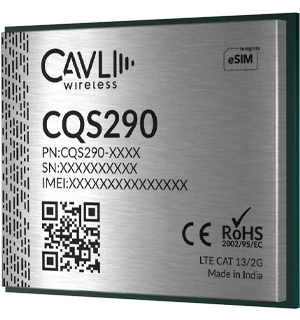
Intelligence at the edge: AI-enabled cellular IoT modules
AI-enabled cellular IoT modules are relatively newer than their legacy and smart counterparts, having been on the market for over 5 years. Along with the connectivity capabilities of the other types of cellular IoT modules, AI-enabled versions include NPUs, TPUs, PPUs, or other dedicated parallel-processing chipsets (e.g., GPUs) for AI inference.
While still in its early stages, AI and cellular IoT convergence holds immense potential to revolutionize industries. Integrating AI directly into IoT modules means AI inference can occur at the edge, allowing for rapid and intelligent decision-making at the edge. This reduces data transmission over cellular networks, saves bandwidth and costs, and facilitates immediate, autonomous decision-making for time-sensitive applications. Further, embedding AI chipsets within connectivity modules can save space and streamline the form factor of IoT devices. In all, these modules are evolving from mere data communication enablers to intelligent edge nodes capable of handling certain workloads independently.
In 2023, AI-enabled cellular IoT modules comprised 2% of global cellular IoT module shipments. The tracker forecasts that by 2027, this will grow to 9%, with a CAGR of 73%.
Example of an AI-enabled cellular IoT module
In November 2023, China-based wireless communications modules vendor Fibocom announced the release of its SC228 LTE smart module, which is powered by Qualcomm’s SM6225 (aka Snapdragon 680) SoC. With its 8 processing cores (4 x A73 at 2.4GHz and 4 x A53 at 1.9GHz), the SC228 is designed to handle AI algorithms, such as image processing algorithms. It is geared toward industrial IoT, smart retail, in-vehicle infotainment, and similar applications. The system comes with Android 14 but is upgradable as new software develops. For connectivity, it supports 4G LTE, 3G, WiFi, and Bluetooth.

Capabilities and applications of AI-enabled cellular IoT modules
AI is not the same across all applications. Within AI-enabled cellular IoT modules, there are varying processing capabilities based either on the needs of specific applications or the limitations of the hardware. IoT Analytics generalizes these modules’ capabilities into three categories: low, medium, and high.
1. Low AI capability
Cellular IoT modules with low AI capability conduct AI inference at less than 5 trillion (or tera) operations per second (TOPS), the standard measure of AI performance based on the number of computing operations an AI chip can handle in one second. Common applications of these modules include:
- Acoustic event detection
- Gesture/Activity recognition
- Voice ID/ Keyword spotting
These low AI capability modules comprised 59% of global AI-enabled cellular IoT module shipments in 2023. While the tracker projects the number of shipments of these modules to grow at a CAGR of 30% until 2027, cellular IoT modules with medium and high AI capabilities are expected to grow faster.
Example of a cellular IoT module with low AI capability
Fibocom’s SC138-EAU module features a Qualcomm QCM6125 SoC with an AI engine capable of 1 TOPS.

2. Medium AI capability
Cellular IoT modules with medium AI capability conduct AI inference at 5–10 TOPS. Common applications for these modules include:
- Human detection
- Vehicle detection
- People counting
- Face detection
In 2023, these medium AI capability modules comprised 36% of all global AI-enabled cellular IoT module shipments. The tracker projects that the shipment of these modules will grow at a CAGR of 102% until 2027.
Example of a cellular IoT module with medium AI capability
Quectel’s SG-530C-CN module hosts a UNISOC P778 SoC, which contains an NPU and is capable of 8 TOPS.
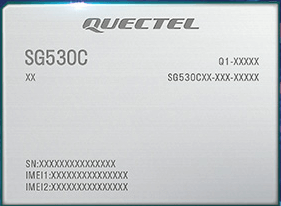
3. High AI capability
Finally, cellular IoT modules with high AI capability conduct edge AI inference at over 10 TOPS. Common advanced applications for these modules include:
- AI-driven predictive maintenance
- Enhanced decision-making with advanced analytics
- AI-enhanced driver safety solutions
- Real-time monitoring for drowsiness and distractions
- Comprehensive safety analysis
- Intelligent voice assistance
According to the tracker, these high AI capability modules comprised 5% of all global AI-enabled module shipments in 2023. The tracker forecasts the shipments of these modules to grow at a CAGR of 128% until 2027.
Example of a cellular IoT module with medium AI capability
MeiG’s SRM930 module bears a Qualcomm QCM6490 SoC, which includes Qualcomm’s 6th Gen AI Engine capable of reaching an AI performance of 12 TOPS.
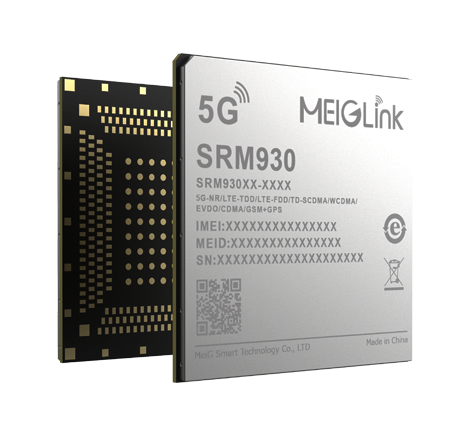
Analyst takeaway
IoT is evolving beyond mere connectivity—it now encompasses connecting devices, understanding the data they generate, and making fast, informed decisions based on this data. As such, computing power and intelligence are becoming increasingly essential, particularly closer to where data is generated—at the edge. Thus, it is beneficial to have a dedicated chipset, such as a GPU or NPU, that can be used for AI inference directly on IoT devices, whether embedded in the printed circuit board (PCB) or as a component within the main processor.
Cellular IoT modules are undergoing a similar evolution. Although still in the early stages, integrating AI with cellular IoT promises to transform various industries. However, the core technology is driven by chipset companies like Qualcomm, Sony Altair, and UNISOC. Other chipset companies like MediaTek and ST may enter this market soon. So far, as seen above, vendors are predominately using Qualcomm chipsets equipped with AI engines that utilize the chipsets’ CPU, GPU, or NPU components.
With the rise of AI-enabled cellular IoT modules, two trends are emerging that are worth watching:
- AI-enabled 5G modules in automotive: The adoption of AI-enabled cellular modules focused on automotive applications, especially with 5G connectivity, is expected to accelerate. By 2027, AI-enabled 5G modules for automotive applications are projected to constitute 21% of all AI-enabled cellular module shipments.
- AI in cellular LPWA modules. So far, most of the modules are focused on standard 5G and 4G technology (with 2G and 3G as fallbacks). However, cellular LPWA modules are already entering the scene. For example, the Sony Altair ALT1350 is a low-power, LTE-M/NB-IoT SoC equipped with AI capabilities for low-power acceleration. This chipset is designed for edge processing and tiny ML model inference, opening doors for AI-enabled modules in the cellular LPWA segment.
Disclosures
Companies mentioned in this article—along with their products—are used as examples to showcase market developments. No company paid or received preferential treatment in this article, and it is at the discretion of the analyst to select which examples are used. IoT Analytics makes efforts to vary the companies and products mentioned to help shine attention to the numerous IoT and related technology market players.
It is worth noting that IoT Analytics may have commercial relationships with some companies mentioned in its articles, as some companies license IoT Analytics market research. However, for confidentiality, IoT Analytics cannot disclose individual relationships. Please contact compliance@iot-analytics.com for any questions or concerns on this front.
More information and further reading
Are you interested in learning more about the cellular IoT connectivity market?

Global Cellular IoT Module and Chipset Market Tracker & Forecast
Included data:
- 38 cellular IoT module brands
- 13 cellular IoT chipset companies
- 10 regions
- 10 technology splits
- 16 industry verticals
- 150 unique model-level chipsets
- 737 unique model-level modules
Related articles
You may also be interested in the following articles:
- Top 10 IoT & telco trends—as seen at MWC 2024
- LPWAN market 2024: Licensed technologies boost their share among global 1.3 billion connections as LoRa leads outside China
- State of IoT Spring 2024: 10 emerging IoT trends driving market growth
- The leading generative AI companies
- Telematics gateways: Driving the future and evolution of mobility
- Smart electricity meter market 2024: Global adoption landscape
Related dashboard and trackers
You may also be interested in the following dashboards and trackers:
- Global Cellular IoT Connectivity Tracker & Forecast
- Global IoT eSIM Modules and iSIM Chipsets Market Tracker
- Global IoT Enterprise Spending Dashboard
- Global Smart Meter Market Tracker
Related publications
You may also be interested in the following reports:
- Generative AI Market Report 2023–2030
- MWC Barcelona 2024 Event Report—Analyst Takeaways
- State of IoT Spring 2024
- IoT Chipset & IoT Module Trends Report 2023
- IoT Gateway Market Report 2023–2027
Subscribe to our newsletter and follow us on LinkedIn and Twitter to stay up-to-date on the latest trends shaping the IoT markets. For complete enterprise IoT coverage with access to all of IoT Analytics’ paid content & reports including dedicated analyst time check out Enterprise subscription.

